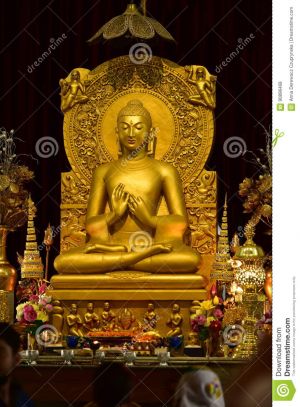Introduction to Nine Yanas By Kyabkon Phakchok Rinpoche
The buddhadharma teaches many things: shamatha, vipashyana, skilful means, wisdom, development stage, completion stage. How should we practice these different teachings? How should we study, reflect, and meditate? It is taught that one should study, reflect, and meditate in stages, like the levels of a staircase. That is the first reason for practicing the nine yanas. The second reason is that the Buddha said that the meaning of all the vehicles agrees at one point, that all the different paths arrive at the same point. Actually, there is one vehicle, all vehicles are one, so if you aren’t able to understand all the different paths then how will you be able to understand the one point that they all arrive at? Therefore, for these two reasons I thought it would be good to make a series of books about the nine yanas available to my students.
All the different paths that the Buddha taught are complete within the nine yanas. For example, in the teachings of the sutra, the teachings of the causal vehicle of characteristics, there are the vehicles of the shravakas, pratyekabuddhas, and bodhisattvas. These are the first three of the nine yanas, the three outer vehicles. Then from among the inner vehicles, first come the three outer tantras: kriya, upa, and yoga. These three are based on the causal vehicle of characteristics, the sutra teachings, but with a little bit of the practice of the resultant vehicle of mantra. Those are the three outer tantric vehicles. The real tantra begins with maha, anu, and ati. The extraordinary teachings of secret mantra are taught in these three inner tantric vehicles where the skilful means of the development stage, the wisdom of the completion stage, and the non-dual unity of the great perfection or completion are emphasised in the maha, anu, and ati teachings, respectively.
Each of the nine yanas has their own different view, conduct, meditation, and fruition, but these different views, conducts, meditations, and fruitions are not completely divorced from each other; each one is able to clarify the meaning of the previous one, and also the next. It is like learning the alphabet. If you first learn a-b-c, then based on that you can learn how to read and start making words. In the same way, when you learn the view, conduct, meditation, and fruition of the first vehicle, it helps clarify the view, meditation, conduct, and fruition of the next vehicle.
The second vehicle makes the third more clear, and so on. Then after slowly progressing through the vehicles like this, when you reach atiyoga, the great perfection, you can see why this atiyoga is so profound, so unique. When you look at mahayoga you can see why practicing mahayoga helps the practice of anuyoga, but also how anuyoga has more subtle practices and why it is so important. The different yanas are not totally separate; they are all linked and when you study and practice the different views, meditations, conducts, and fruitions in stages like this, then slowly slowly you can come to see and understand these things.
In presenting these nine yanas, I have chosen many different texts and tried to put some of the different teachings, trainings, and practices I have received into each of the different yanas. Some are texts by Indian panditas. Some are texts by Tibetan mahasiddhas, and some are words of the Buddha himself. Most importantly, you need to study the texts and their meaning, contemplate that meaning, meditate, and also do the specific sadhana practice for each yana. This is something that is very unique about the nine yanas teachings given in this series of books: you have a specific sadhana for each yana with a specific mantra, a specific thangka, and so on. These nine yana sadhanas are not something that I made up; they are called the Rigsum Nyingtik in Tibetan (the Heart Essence of the Three Enlightened Families), and are a branch teaching of the Three Sections of the Great Perfection, a very famous text revealed by the supreme terton Chokgyur Lingpa. The three protectors—all of the buddhas’ compassion manifest in the form of Avalokiteshvara, all of the buddhas’ wisdom manifest in the form of Manjushri, and all of the buddhas’ enlightened power manifest in the form of Vajrapani—are the main deities in these nine yanas sadhanas and their form changes in each of the yanas. For example, in the shravakayana, the three protectors are in the form of arhats.
So I hope you can finish the shravaka and pratyekabuddhayanas within two years, spending one year on each. The bodhisattvayana will probably take at least two years, because there are so many different texts to study. The outer tantras of kriya, upa, and yoga should be able to be finished within one or two years. Then you will spend at least two years on mahayoga, at least another two or three years on anuyoga, and then on atiyoga your whole life.
